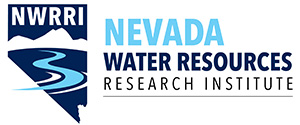Nevada Water Resources Research Institute
NWRRI RFPs
There are two opportunities annually to receive funding through the NIWR: Nevada Water Resources Research Grants [104(b)] and National Competitive Grants [104(g)].
Nevada Water Resources Research Grants [104(b)]
Nevada was granted approximately $146,000 to be used annually for research projects and student training in the state. Nevada Water Resources Research Grants must meet the following criteria:
- Proposals should be for research and information transfer projects that are for a duration of 12 months.
- A 1:1 (non-federal to federal) match is required.
- Indirect costs may not be charged but can be used as match.
- The principal objectives of the program are to:
- Conduct research related to important water resource problems of the state of Nevada.
- Promote the dissemination and application of the research results involving these problems.
- Assist in training scientists in relevant water resource fields.
National Competitive Grants [104(g)] – General, Per- and Polyfluoroalkyl Substances (PFAS), and Aquatic Invasive Species
There are three National Competitive Grants available annually. General National Competitive Grants are required to focus on water issues that are of regional or interstate concern. PFAS Competitive Grants are required to promote research related to the nation’s water quality with a focus on PFAS. Aquatic Invasive Species Grants are required to focus on invasive species in the Upper Mississippi River Basin.
All National Competitive Grants must meet the following criteria:
- Any investigator at an institution of higher learning in the United States is eligible to apply for an award through a Water Resources Research Institute (WRRI).
- Projects can be 1 to 3 years in duration and a 1:1 (non-federal to federal) match is required.
- Proposals involving substantial collaboration with the USGS are encouraged.
- Proposals must be filed by the institute at which the WRRI is located.
General National Competitive Grants
Competitive grants under Section 104(g) are required to focus on water problems and issues of a regional or interstate nature beyond those of concern only to a single state. Four proposals will be funded under these research priorities. The maximum award has historically been $348,000.
Research Priorities
- National-scale evaluation of water budget: Retrospective or predictive analyses using hydroclimate-forcing data sets, with emphasis on CONUS404, which was developed in a USGS-NCAR collaboration.
- Socioeconomic and Ecological Vulnerability to Extreme Events: Integrate ongoing USGS research and data collection in order to assess socioeconomic and ecological vulnerability to compounding extreme events and develop adaptation measures.
- Hydrologic model advancement: Explore methods to develop new hydrologic models in a geographic area and provide information on promising modeling approaches to inform science questions specific to a region.
PFAS Competitive Grants
The objectives of this program are to better understand the effects of PFAS on water resources and water quality, and the resultant exposure to humans, other organisms, and ecosystems. Research is needed to better understand these effects and guide management decisions that will improve water resources at the regional or national scale. Nine proposals will be funded under these research priorities. The maximum award has historically been $310,000.
Research Priorities
- Media-specific methods: Enhanced methods for PFAS detection on specific media, with a clear indication of new or different compounds, new or different methodological approaches, lower detection levels for specific media or compounds.
- Atmospheric sources: Improved understanding of atmospheric exchange in PFAS distribution and fate.
- Fate, persistence, and transport of PFAS: Process-oriented research of PFAS fate, transport, and effects, with an emphasis on a molecular-level understanding of PFAS precursor transformation, sorption dynamics, or mechanisms of bioaccumulation and/or biological/ecological effects, or biodegradation of PFAS along source to receptor pathways and identification of mitigation methods.
Aquatic Invasive Species Competitive Grants (Upper Mississippi River Basin)
The objectives of this program are to address the growing effect of numerous aquatic invasive species on water quality, water quantity, and aquatic ecosystems in the Upper Mississippi River Basin. Research is needed to better identify and understand these interactions and guide management decisions that will help reduce the effects of invasive species on water resources and aquatic ecosystems at local, regional, and national scales. Four proposals will be funded under these research priorities. The maximum award has historically been $250,000.
Research Priorities
- Effects: Research that improves our understanding of the effects of aquatic invasive species on lakes, rivers, and associated tributaries in the Upper Mississippi River Basin, including changes to water quantity, water quality, and ecosystem dynamics.
- Characteristics: Research that identifies physical, biological, and chemical characteristics of water bodies that infer resistance and resilience to the distribution, establishment, and effects of aquatic invasive species in the Upper Mississippi River Basin.
- Management: Research on assessment of the detection, spread, and management of aquatic invasive species in the Upper Mississippi River Basin and the connections to human dimensions, both socially and economically.

CONTACT
Dr. Sean McKenna
Director
Sean.McKenna@dri.edu
775.673.7305
Matt Bromley
Deputy Director
Matt.Bromley@dri.edu
775.673.7944
Suzanne Hudson
Program Administrator
702.862.5464
Suzanne.Hudson@dri.edu
LOCATION
Desert Research Institute
755 East Flamingo Road
Las Vegas, NV 89119
DIVISION
Hydrologic Sciences